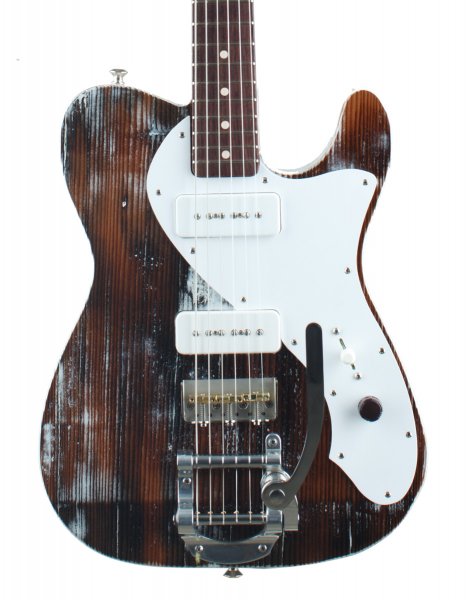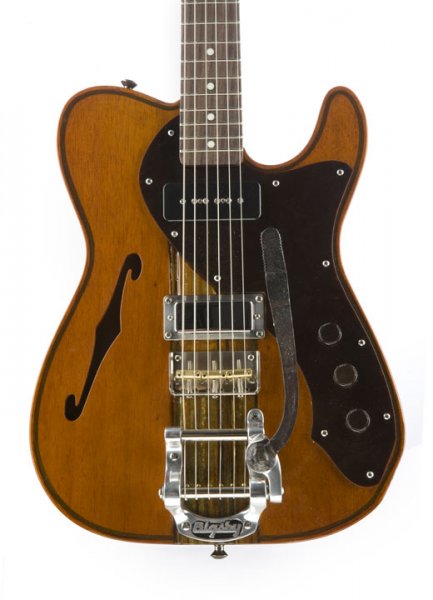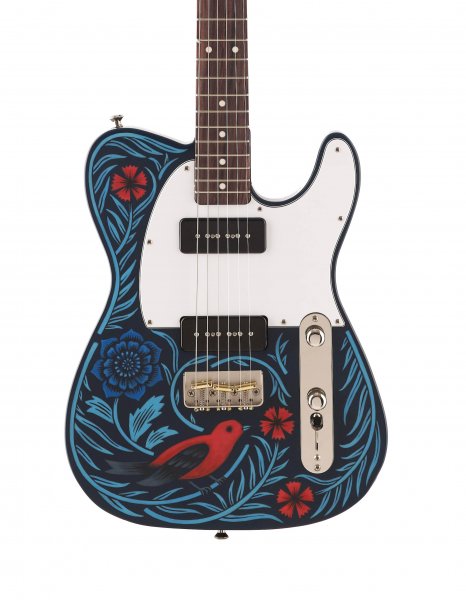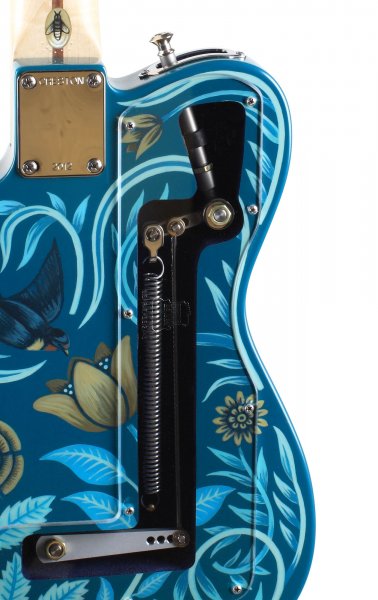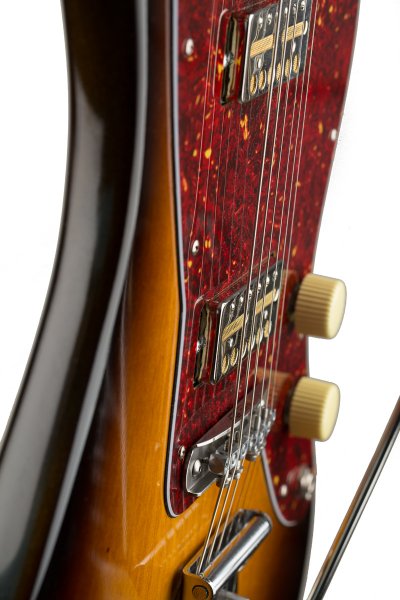Here at Lollar Pickups, we love working closely with some of the best builders in the industry to find the right tone for their custom creations. So we thought we’d spotlight some of the unique builds and the thought process behind them. Next up is Creston Lea and his Water Tank Custom, which was built for Luke Doucet using our ’50s Wind Soapbar P-90s.
1. This guitar is has such an interesting design. Is this something Luke specifically wanted, or did you dream it up?
Luke was very specific about some things – neck dimensions, for instance – but wanted to be surprised by the final look. We emailed back and forth and he listed a few of my guitars which he especially liked. I’ve had really good luck with western red cedar bodies and mahogany / rosewood necks, so I’m sure I suggested that combination early on. I started by whitewashing the body but the old pickle brine stain was so dark, the whitewash looked pretty lousy sitting on top of it. I started sanding it off and, at a certain point, it began to look like something appealing – so I stopped sanding and started spraying clear lacquer. I wrestled with pickup cover and pickguard colors for a while, but ultimately settled on two from my precious, dwindling stash of white soapbar covers and a 1-ply white guard.
2. What made you choose 50’s Wind P90’s for the Water Tank Custom?
The usual Neil Young fetish. Luke wanted something he didn’t already have, likes the Crazy Horse guitar sound, doesn’t get along with Les Pauls. So P90s were an obvious choice. But I’m pretty quick to push P90s in any case. They’re my favorite pickup, and the 1950’s-wind seem particularly versatile. But as Brian Henneman of the Bottle Rockets once said to me, “P90s are like pizza – even the worst ones are good enough to eat.” Having eaten a lot, Lollar’s 1950’s-wind P90s are my favorite pizza. The “both” setting is a big, clear, articulate sound, and either pickup in isolation lends more focus without becoming indistinct. I fear mud and mush and woofiness just as much as thinness and tinniness. The 1950’s-wind P90s avoid those traps and keep enough of the aggressive, warm P90 attributes to sound just right.
3. Many of your guitars feature old growth reclaimed wood. What’s the advantage of using old wood? Sounds, looks, or the story? All of the above?
I love gumball colors and metallics and unusual combinations of opaque pickguard-and-body colors, but I do seem to make a lot of guitars out of salvaged barn beams, pickle vat staves, and old roughcut lumber in transparent finishes.
In Luke’s case, he was less interested in the look than the weight (western red cedar is very, very light) and in what he termed the “not-having-to-cut-more-trees factor.” But a lot of people are attracted to the age and look of old barn beams. There’s so much new junk everywhere you go, people find old wood attractive if not meaningful.
This all started in 2006 when Anders Parker asked me to make a guitar from a white pine beam he extracted from an early-1800’s barn on the property where he grew up. When I started, I didn’t know whether it’d be something worth playing or might end up mounted like a trophy marlin over his mantlepiece. But it turned out well and he’s played it all over the world ever since. I got a lot of attention for that guitar and, now, seven years later, I make as many salvaged-wood guitars as anything else. My western red cedar comes in the mail, but I use a lot of old growth spruce and white pine salvaged from Vermont barns. Sometimes people send me wood from their ancestral farms or wherever else. The deep connection that those people inevitably feel to their guitars is pretty gratifying to me as a builder. This one, Jay Farrar’s Okemah Artifact Custom, goes a step further:
I’d never do anything to simulate age or playing-wear – I’ve always been politically opposed to faux-aging of any kind – but I try to use colors and hardware that compliment the old wood. Sometimes that means applying a patina to a steel pickguard, for instance, but I think of that as adding color, not making a fake antique.
There is something sonically special about wood that’s been air drying for a couple hundred years. Old wood isn’t mandatory for constructing a good-sounding guitar, but it gives you a head start.
4. Favorite guitar you’ve ever built?
I’m fond of all the guitars I’ve done with my artist friend, Sarah Ryan, who does decorative painting on lots of my instruments. She’s constantly outdoing herself. But there’s something about this one that I really love…
And I love this one not only because Sarah’s work is beautiful, it sounded great, and because its owner has commissioned a continuing slew of blue Sarah-painted guitars from me, but also because I got to send it to Gene Parsons for a B-bender installation. Gene Parsons! A sweet guy and a legendary musician. AND – like Sarah – the work he does is perfect. What’s perfect in this world? Not much.
Every few years, I seem to make myself a new guitar. I just finished one with a sunburst offset body and two of Lollar’s new Gold Foil pickups. It’s as good as any guitar I’ve ever made. Those pickups are wonderful.
So, no – don’t have a favorite. I try to make them all unique and I don’t make anything I’m not excited about. I’m pretty attached to all of them.
5. What guitarist, alive or dead, would you love to build a instrument for?
I’ve always thought I could make Richard Thompson happy.
